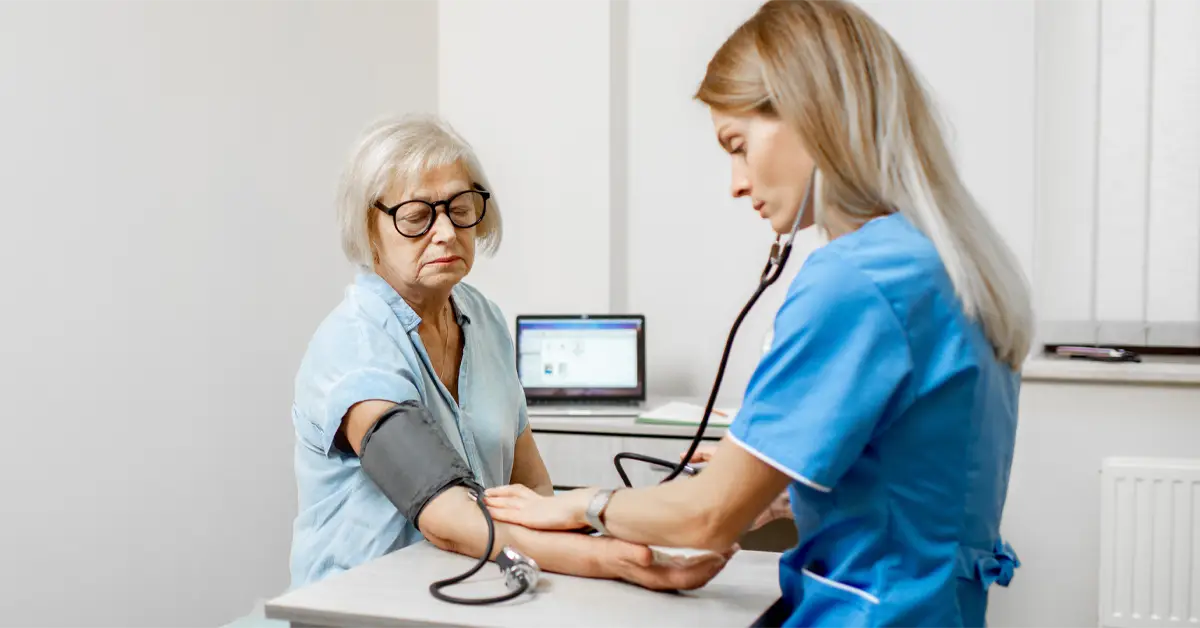Blood pressure stroke level is an important indicator to consider when looking at risk factors for cardiovascular health. When your blood pressure reaches a stroke level, it means that your heart is working harder than usual and that you are at a higher risk for developing stroke. High blood pressure stroke levels can vary depending on age, gender, and other factors. It’s important to understand what your own personal stroke level is so that you can take action to lower it if needed. Knowing the signs of high blood pressure, recognizing the symptoms associated with stroke level blood pressure can help you take control of your health and reduce the risk of having a stroke or other cardiovascular diseases. Moreover, it is also important to note the role of remote patient monitoring (RPM) in preventing strokes.
Blood Pressure Stroke Level: Measurement
High blood pressure is a major risk factor for heart disease and stroke. It is characterized by a blood pressure reading of 140/90 mm Hg or higher, with systolic blood pressure being at least 140 and diastolic blood pressure being at least 90 mm Hg. Monitoring blood pressure regularly can help detect any changes in blood vessel health that may increase the tendency of stroke. By keeping a normal blood pressure level within the range of less than 120/80 mm Hg, you can lower your risk of developing health problems such as heart attack and stroke. When blood pressure rises, it is important to speak with your healthcare provider (HCP) about ways to lower blood pressure and to prioritize blood pressure management to maintain good health and prevent serious complications. By keeping blood pressure within a healthy range, you can lower your risk of stroke and other serious health concerns.
Symptoms of High Blood Pressure
The high blood pressure symptoms can be difficult to spot, as many people show no symptoms at all. Some of the common signs and symptoms of high blood pressure are headaches, dizziness, chest pain, problems breathing and irregular heartbeat. If you experience any of these symptoms or suspect that your blood pressure is too high, it is important to seek a diagnosis from a qualified HCP. Early diagnosis and treatment can help reduce the risk of serious complications associated with high blood pressure.
Managing High Blood Pressure for Stroke Prevention
It is important to note that a severe increase in blood pressure can lead to a stroke. Here are some specific ways you can manage your high blood pressure for stroke prevention:
- Lifestyle changes: The best way to manage high blood pressure is to exercise regularly, eat a healthy diet and limit your salt intake.
- Blood pressure medication: If you have been prescribed blood pressure medication by your HCP, it is important to take it as directed. Do not stop or change your medication without consulting your HCP.
- Regular blood pressure monitoring: Regularly measuring your blood pressure can help you and your HCP track your progress and make any necessary adjustments to your treatment plan. It is important to monitor your blood pressure often to ensure it stays within the normal range.
By following these tips and working with your HCP, you can prevent a fatal stroke or other health complications caused by the rise in blood pressure.
Preventing Stroke Through DrKumo Remote Patient Monitoring
DrKumo RPM technology is a powerful tool for the prevention of stroke in patients, particularly those with high blood pressure. DrKumo state-of-the-art RPM system is user-friendly and compliant with HIPAA regulations and can be accessed through mobile devices. The AI-driven RPM solution securely collects real-time data of vital signs, such as blood pressure, and sends it to a secure cloud for healthcare providers to monitor.
By tracking blood pressure at home and having regular monitoring and access to healthcare providers, patients can act quickly when signs of stroke arise, increasing their chances of avoiding a stroke or other serious health issues. With DrKumo RPM, patients can take control of their own health and make informed decisions about managing their condition with the help of their healthcare providers. Overall, RPM technology is an invaluable tool in helping patients with high blood pressure stay healthy and prevent stroke.
Takeaways
High blood pressure is a significant factor that can increase the risk of stroke and other serious health problems. It is important to manage this condition by adopting a healthy lifestyle, taking medications as prescribed by your HCP, and regularly monitoring your blood pressure. RPM is a useful tool that can help you monitor your blood pressure and other vital signs remotely, allowing you to work with your healthcare team to identify potential issues early on and take steps to address them. DrKumo’s technology solution can help you track your blood pressure and make informed decisions about managing your condition with the support of your HCP. By managing your high blood pressure and taking these preventative measures, you can reduce your probability of having a stroke and other serious health issues.
Contact DrKumo now to learn more about how you can use RPM to manage your blood pressure and reduce your stroke risk.








